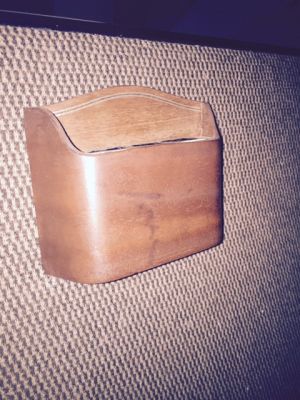- Home
- About Us
- Join/Renew
- Member Benefits
- Member Pages
- Log In
- Help
- Museum Store
My Car only has the one, single-bulb lamp in the roof above the rear passengers’ seating area. There is a switch in the passenger-side door latch pillar, with three wires. One is a ground which attaches to a body-frame bolt in the floor; the other two wires come from the top down and best I can tell one is a ground from the lamp body ( necessary because it is fastened to wood) and the other is hot 6 Volts. This hot wire comes from the firewall-mounted fuse block and is contained in the harness which passes down past the vacuum tank. The wires are all in poor condition and I can’t see any way to replace them without removing upholstery, and none of this seems easily removable. I am at an impasse for now.
Try page 30, under the topic heading “Gasoline” for pertinent information.
Avgas is blended to lower Reid vapor pressure so would tend to resist vapor lock; also is of higher quality.
Get rid of your “winter” gas and burn it in your lawn mower. Keep fresh, summer gas in warm weather.
On a recent posting in the Rolls-Royce forum, a vapor lock issue turned out to be a failing coil: so, it’s not always vapor lock, but VL gets the blame.
Good luck to all of us this summer!
I understand there is supposed to be a sealing washer underneath the 40 mounting bolts (1/4 inch fine thread). My car did not have any yet none of the bolts was leaking coolant. I think perhaps they were installed with thread sealant. Olson’s have the required seals if needed. I don’t know how they are constructed: whether copper crush washers or the bonded sealing washers like I have on shelf. I will see how it goes.
Consider a stock muffler intended for a Buick straight eight from the late 1940s-early 1950s. It is a long round muffler and should allow sufficient flow; also should be somewhat more available.
I saw some Bosch 1/8 inch copper tubing on the rack at Advanced Auto Parts last evening; it is intended to connect an oil pressure gauge but it sure looked about right for connecting the wiper vacuum system on our Cars. Just FYI
I am bring some anode material to St. Louis to donate for the Silent Auction if anyone is interested.
A vendor I ran across provides magnesium anodes for boats under the trade name “Martyr””; what a great name!”
If it’s clear, paint it.
Hi, Greg. The baffle is there. It must be stainless steel as it is pristine.
Shouldn’t be a problem to find suitable anode material; is a particular shape needed or is round rod OK?
I admit I was surprised to see active corrosion damage going on as my engine was rebuilt circa 12 years ago and it has had glycol coolant since.
We use anodes for different things at work: engine cooling systems, pipeline, etc and they seem to be effective if maintained. Some on steel compressor cylinders are designed to leak coolant once depleted so we have incentive to change them ( as opposed to driving a pencil in the weep hole and calling it good).
Try medical and laboratory supply vendors: they offer a myriad of small-diameter tubing and associated fittings.
I cleaned the plate up: there was a buildup of corrosion along the top of the bend which forms the lower gasket flange. I knocked that off with a screwdriver and underneath was very active corrosion as evidenced by the very shiny surface underneath.
I plan to try sealing the two perforations with a wire welder and see what happens. Other than using modern engine coolant I am not certain what else can be done to prevent corrosion: perhaps a magnesium anode.
I have a photo of another, newer Bosch coil and the positive terminal is on the left with the logo upright. I am assuming this as it is all the information I have.
The thread root is always the weak point; avoid the hardware store all-thread rod and buy B-7 which will be strong material with rolled threads (increased fatigue resistance) so it should be good but I still can’t believe a double-end, equal-length stud is so impossible to find.
second pic

Thanks, Peter; I was trying to avoid use of threaded rod in favor of finding a double-end stud of the appropriate length, but these seem to be harder to find than I expected. I was surprised McMaster do not seem to offer any double-end studs.
Getting two made at a local shop: problem solved!
One question: what is the normal compression pressure for this engine? Is it a Series 80 engine, a derivative, or a completely different engine.
Is it too large?
Thanks, Fellows; I am not normally crazy about Resale Red but I agree that this example looks nice: attractive yet not loud.
The whitewall Lesters are a size larger than original at 7.00 X 21, but they look so right on the Car that I left them alone and bought a spare to match.
I am repainting the firewall and it appears to have been black originally. I have no idea if there was a significant relationship between firewall and exterior color when it was built.
Wouldn’t it be amazing to actually see some of these designs in metal?
More like an “anti-sell”” device…”
